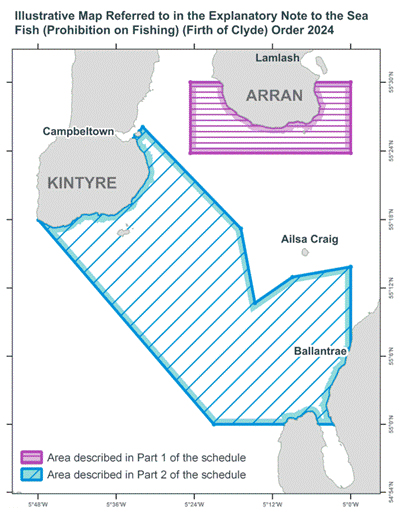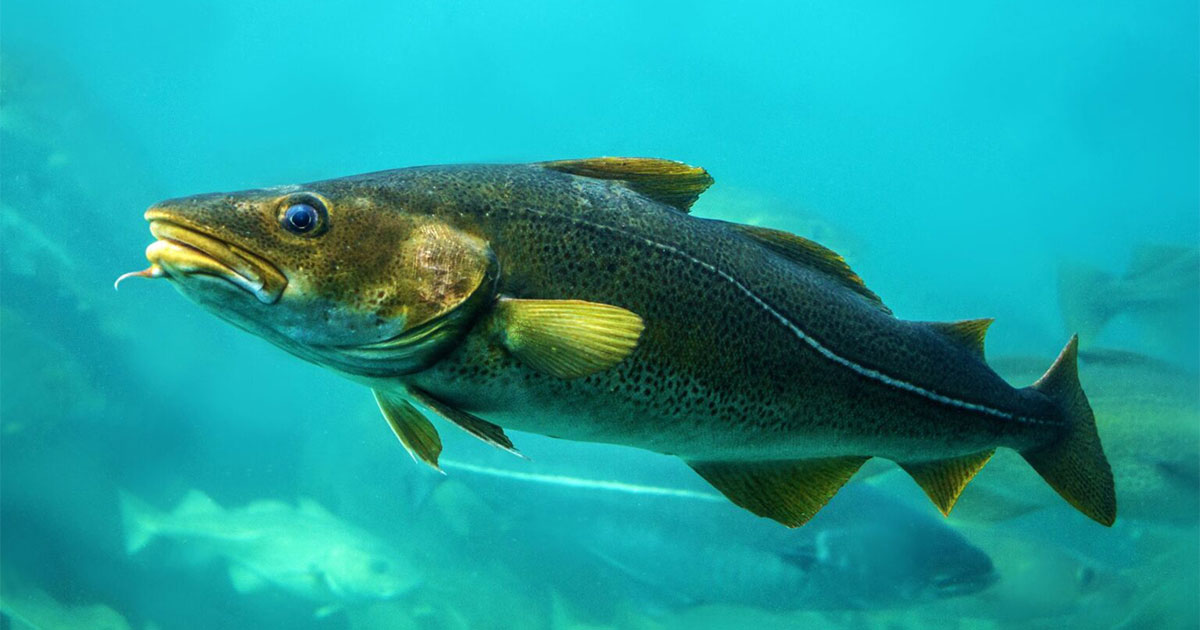An area of the Firth of Clyde will again be closed to most types of fishing activity in spring 2024 and 2025 to protect spawning cod.
The closure has been in place each year since 2002 during the cod spawning season. While there has been variation, the closures in 2024 and 2025 will be on the same basis as in 2022 and 2023, prohibiting most types of fishing activity for eleven weeks from February 14 to April 30.
During spawning, cod are vulnerable to disruption. Cod mate by lekking, a behavior also found in birds such as black grouse and capercaillie. Male cod become territorial and take possession of an area of the seabed, defending it from other males. They use muscles around their swim bladders to make grunting and rumbling sounds to attract females. When focused on mating, cod are less likely to try and avoid fishing gear so are particularly vulnerable to being caught. If disturbed, cod are unlikely to return and may not mate at all that year, with research suggesting that any activity within 10 m of the seabed could disrupt spawning activity.
The closure takes account of the cod’s preference to spawn on gravel and coarse sand, with these areas closed. Surrounding areas, where the seabed is softer sand and mud and cod are less likely to spawn, remain open to fishing.
We consulted on renewing the management measures last year with a majority of respondents supporting the closure.
The eleven-week closure will have short-term impact on local fishers. Fishing for nephrops in the closure area will be prohibited due to the risk of inadvertently catching cod (by-catch), or otherwise disturbing cod spawning sites with fishing gear. However, the closure is part of a range of fisheries management measures which aim to replenish cod stocks in the medium to longer term, creating a more sustainable fishery benefitting our marine eco-system and fishing industry in the West of Scotland.
 (Image credit: The Scottish Government)
(Image credit: The Scottish Government)
We base fisheries management decisions on the best available science. Recent ICES advice on northern shelf cod (the wider stock which includes cod found spawning in the Firth of Clyde) is much more positive than it once was, showing a stock in recovery. However, it is still appropriate for us to take a precautionary approach with robust management measures to protect spawning and juvenile fish in our inshore waters.
We will be enhancing data collection and monitoring in the Clyde during the closure to help inform future management decisions. We are also committed to working with our Coastal States partners Norway and the EU to review the management measures in place for the wider northern shelf cod stock.
More information
The closure for 2024 and 2025 is implemented by a Scottish Statutory Instrument (SSI) laid in the Scottish Parliament on January 11, 2024. The closure is in effect from February 14 to April 30 in 2024 and 2025.



